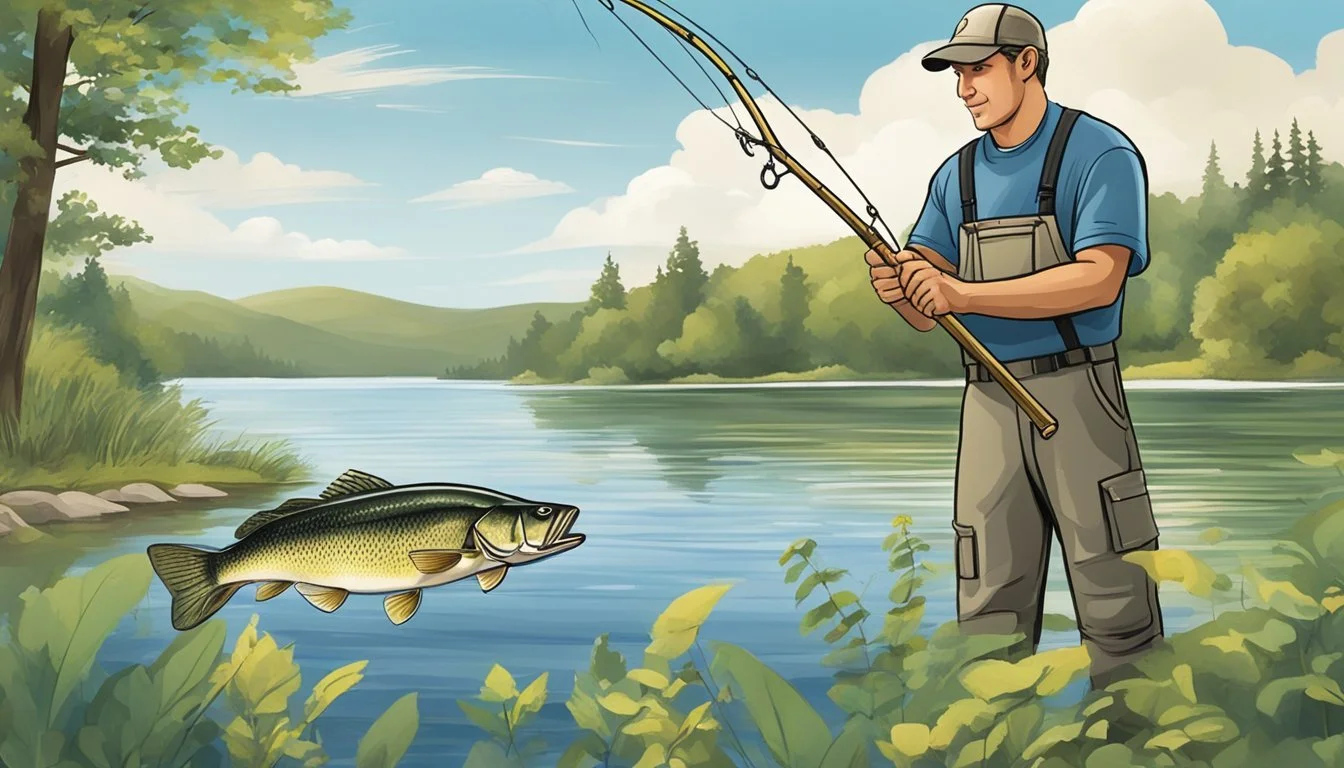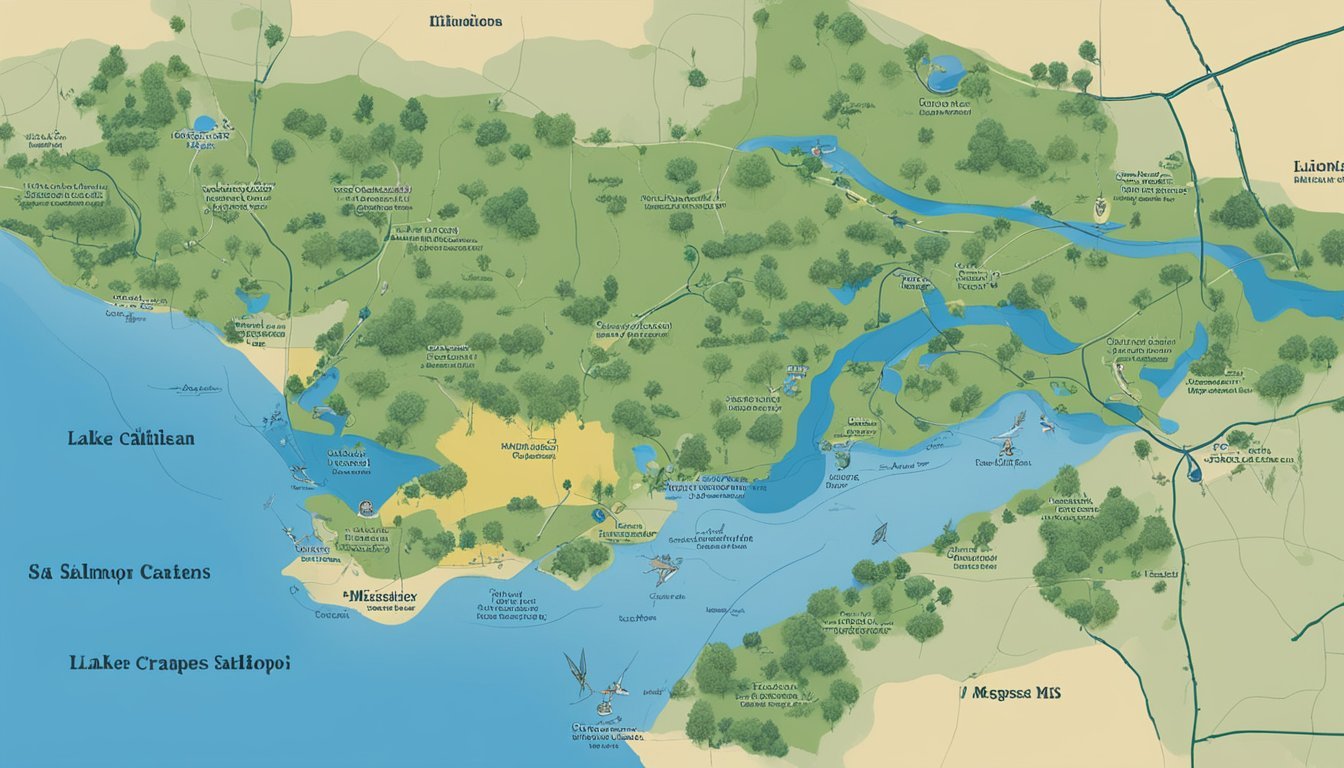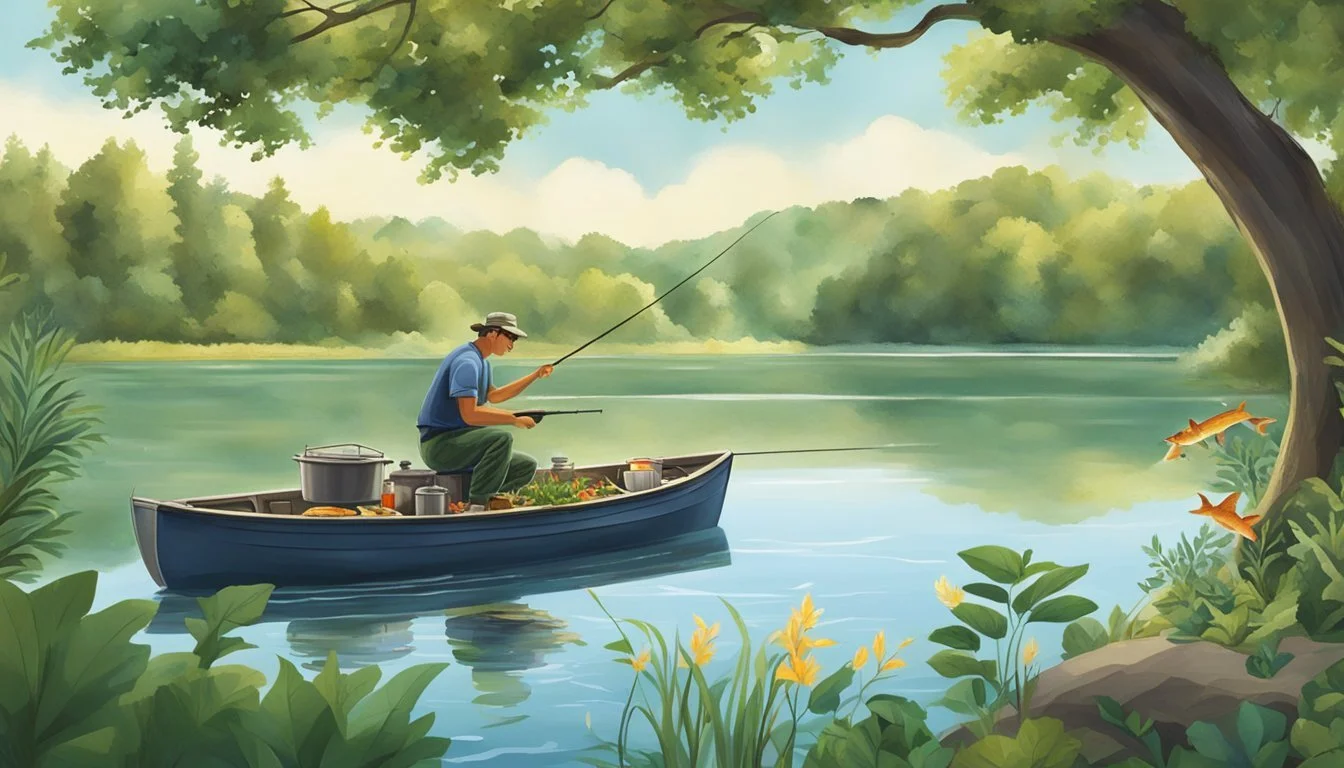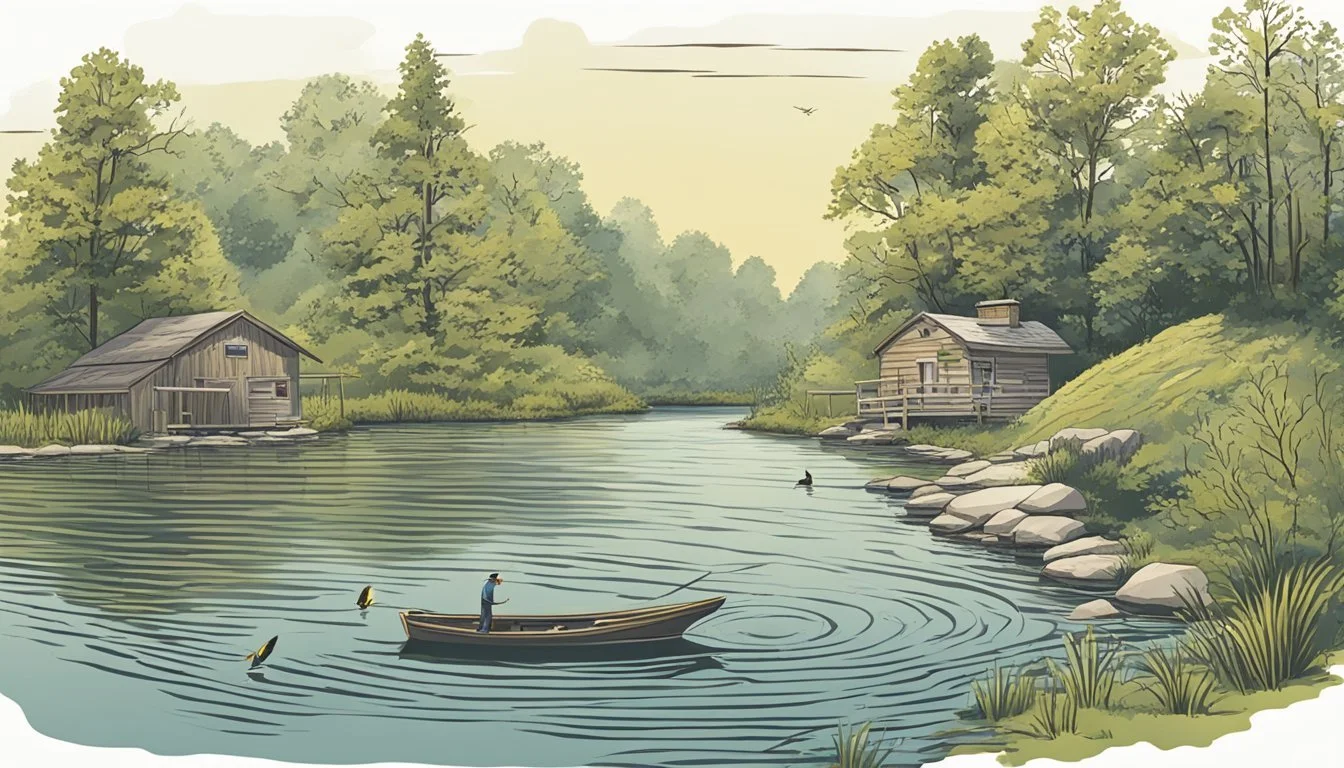Best Fish to Catch and Eat in Illinois
A Guide to Local Favorites
Illinois offers a rich tapestry of fishing opportunities, from the mighty waters of Lake Michigan to the flowing expanse of the Mississippi River. Anglers in the state can expect a diverse catch suitable for both sport and culinary enjoyment. Among the most sought-after fish (What wine goes well with fish?) are the Smallmouth Bass in the northern rivers and Lake Michigan, known for their spirited fight and suitability for various cooking methods.
Inland, the state's lakes and waterways provide an abundance of species such as Bluegill, Crappie, Walleye, and Catfish. These fish are not only a challenge to reel in but are also prized for their taste, with many local recipes celebrating their flavors. Furthermore, conservation efforts and regulations ensure sustainable fishing practices, allowing for the continued enjoyment and consumption of these freshwater catches.
Illinois Fishing Overview
Illinois provides a vast array of fishing opportunities, from bustling Chicago harbors to the tranquil waters of rural lakes. Anglers find the state a premier destination for catching a variety of fish species suitable for both sport and consumption.
Geographic Diversity of Fishing Spots
Illinois is characterized by its diverse fishing environments. In the north, the shores of Lake Michigan offer metropolitan angling opportunities, particularly around Chicago. Moving downstate, there are numerous inland lakes and rivers, such as the Mississippi River and the Illinois River, each with its own ecosystem and thriving fish populations. These waterways are managed by the Illinois Department of Natural Resources (Illinois DNR) to ensure sustainable and enjoyable fishing for all.
Popular Fish Species in Illinois
Illinois hosts a range of popular fish species which are celebrated for both their fight and flavor. A brief overview includes:
Lake Michigan:
Coho Salmon: Known for being tasty when grilled.
Lake Trout: Often found in deeper waters and valued for its taste.
Rivers:
Catfish: The Mississippi River and Illinois River are well-known for their abundant catfish, which are often sought after for their rich taste.
Bass: Rivers are home to several bass species, with largemouth bass being a favorite among anglers.
Inland Lakes:
Crappie: Mild in flavor and popular among local fishermen.
Bluegill: A panfish favorite that is easily caught and enjoyed by anglers of all ages.
The Illinois DNR provides up-to-date information about fishing regulations to ensure the health of these species for future generations. Whether one is fishing in a river, lake, or the Great Lake, Illinois offers a rewarding experience with a meal to boot.
Top Freshwater Fish to Catch and Eat
Illinois offers a variety of sought-after freshwater fish that are both fulfilling to catch and delightful to eat. Anglers can look forward to reeling in tasty species ranging from savory catfish to mouth-watering bass.
Catfish Varieties
In Illinois, Channel Catfish and Blue Catfish are abundant and provide a year-round fishing opportunity. They are known for their meaty textures and mild flavors, making them excellent for a variety of dishes. Catfish thrive in many of Illinois' rivers and lakes, with especially significant populations in the Mississippi River.
Bass Fishing Opportunities
Largemouth Bass are both a sportfish and a table fare favorite in Illinois. These fish, typically more sizable than 10 inches in length, are widespread throughout the state's freshwater systems. Smallmouth Bass, while less prevalent than their larger cousins, are equally exciting to catch and are known for their firmer texture and robust taste.
Catching Crappie in Illinois
Crappie, encompassing both Black and White varieties, are popular among Illinois anglers. Their light and sweet-tasting flesh renders them ideal for frying. Seek them out in the state's lakes and rivers, where they are often targeted in the springtime when they congregate for spawning.
Pursuing the Elusive Walleye
Walleye, a prize catch for their succulent, flaky meat, can be more challenging to hook than other species, thus delivering a gratifying experience for persistent anglers. They are usually targeted in deeper waters of Illinois' larger lakes and reservoirs, with methods varying with the seasons.
Key Fishing Destinations and Their Specialties
Illinois offers a variety of prime fishing destinations, each with its own unique species and fishing opportunities. Anglers can expect a delightful mix of freshwater experiences across the state's notable lakes.
Lake Michigan Hotspots
Lake Michigan is a haven for fishing enthusiasts, with Chicago's shoreline and Waukegan Harbor being prominent hotspots. The waters are teeming with trout and salmon, particularly coho and chinook salmon, which are best caught during the spring and fall migrations.
Chicago's Shoreline: Notable for salmon, with peak seasons in spring and fall.
Waukegan Harbor: Renowned for trout fishing, especially during cold months.
Rend Lake Fishing
Rend Lake is recognized for its excellent crappie fishing, boasting large populations that make it a favorite spot for both casual and serious anglers. Fishermen also find catfish and bass plentiful, providing a well-rounded fishing experience.
Crappie: Abundant year-round, with peak catches in spring and fall.
Bass & Catfish: Steady populations offer consistent fishing opportunities.
Exploring Lake Springfield
Lake Springfield is a hotspot for those seeking largemouth bass, which are active throughout the year. The lake’s structure, with plenty of drop-offs and submerged structures, caters perfectly to bass fishing tactics.
Largemouth Bass: Year-round activity with diverse habitat in the lake.
Adventure at Lake Shelbyville
Lake Shelbyville is another excellent location for anglers targeting bass and crappie. Its clear waters and abundant aquatic vegetation are the perfect environments for these species, making the lake a popular fishing destination in Illinois.
Bass: Best caught in spring and fall near vegetation.
Crappie: Known for its sizeable population, especially in shallower waters.
The Unique Crab Orchard Lake
Crab (What wine goes well with crab?) Orchard Lake stands out for its unique offering of hybrid striped bass and bluegill. The lake provides an exciting challenge for those looking for a diverse fishing experience.
Hybrid Striped Bass: Offers a thrilling fishing experience for anglers.
Bluegill: Well-populated, providing excellent opportunities for all skill levels.
Fishing Techniques and Bait Recommendations
Choosing the right fishing techniques and baits can significantly improve an angler's success rate in Illinois. Understanding whether to use live bait or artificial lures, mastering trolling, and knowing effective ice fishing methods are essential.
Live Bait Vs. Artificial Jigs
Live Bait
Advantages: Imitates natural food, often more enticing for fish.
Common Types: Minnows, nightcrawlers, leeches.
Best for: Largemouth bass, catfish, panfish.
Artificial Jigs
Advantages: Durable, versatile, and can be used in various conditions.
Recommended Jigs: Swim jigs, spinnerbaits, soft plastic jigs.
Best for: Smallmouth bass, especially in northern Illinois rivers and Lake Michigan.
Trolling for Trophy Fish
Trolling Techniques
Methods: Vary speed and depth until finding where fish are active.
Equipment: Downriggers, planer boards, heavy-duty rods for deep-water trolling.
Essential Baits
Deep Diving Lures: Effective for walleye and pike.
Spoons and Crankbaits: Preferred when targeting species like muskie or striped bass.
Ice Fishing Techniques
Ice Fishing Basics
Shelter: Portable shelters or ice shanties provide comfort and safety.
Equipment: Short rods, lightweight reels, ice augers, and a scoop to keep holes clear.
Effective Baits for Ice Fishing
Live: Wax worms, spikes, and minnows often yield successful catches under the ice.
Artificial: Small jigs and ice flies paired with live bait or plastic attractants can be extremely effective in cold conditions.
Fishing Regulations and Conservation
Illinois upholds a structured set of fishing regulations to protect its aquatic wildlife, ensuring that angling remains a sustainable and enjoyable activity. Careful management balances recreational opportunities with the conservation of fish populations across the Prairie State.
Licenses and Legal Restrictions
Illinois requires anglers to possess a valid fishing license unless exempted by age or other special circumstances. These licenses can be acquired through the Illinois Department of Natural Resources (IDNR) or authorized vendors. Specific rules apply for:
Resident and Non-Resident Licenses: Distinctions in fees and requirements.
Free Fishing Days: Designated periods when individuals may fish without a license.
Catch Limits and Season Dates:
Certain species have defined catch limits and open seasons to prevent overfishing.
For instance, the Spring Trout Fishing Season opens for catch-and-release only in mid-March, followed by a regular open season starting April 1st, when keeping the catch is permissible.
It's crucial to consult the current year's regulations for any updates or site-specific restrictions.
Conservation Efforts in Illinois
Illinois's approach to conservation involves:
Stocking Programs: Replenishing water bodies with species like trout to maintain ecological balance.
Habitat Restoration: Enhancing natural waterways to support fish populations.
Pollution Control: Reducing contaminants that affect fish health and ensuring the fish are safe to consume. This concurrently addresses issues impacting human health as well, given the presence of contaminants in both store-bought and sport-caught fish.
These efforts aim to maintain the state's biodiversity while also providing anglers with a multitude of fishing opportunities. Enthusiasts and conservationists alike contribute to these initiatives, fostering a culture of respect towards Illinois fishing and wildlife.
Planning Your Fishing Trip in Illinois
Planning a successful fishing trip in Illinois requires knowledge of seasonal fish activity, finding suitable accommodation, and considering the guided tours available. Whether one aims to land a hefty bass or a challenging walleye, this guide serves as a comprehensive resource.
Seasonal Fishing Calendar
Spring:
Bass: Pre-spawn conditions make it excellent for bass fishing in areas like Lake Shelbyville.
Walleye: March through early May, river systems like the Illinois River see walleye on the move.
Summer:
Bass: Early mornings or late evenings are optimal for bass, avoiding the midday heat.
Walleye: Deep water areas of lakes yield better results as walleye avoid summer heat.
Fall:
Bass and Walleye: Both species become more aggressive as the water cools, with increased feeding activity.
Winter:
Limited due to cold conditions, yet ice fishing can be productive for various species.
Accommodation and Lodging
Options for lodging vary depending on the region:
Northern Illinois: Proximity to Lake Michigan offers hotels and resorts in Chicago and surrounding cities.
Central to Southern Illinois: Cottage rentals and campgrounds are popular near regional lakes like Clinton Lake.
Lodging should be booked in advance during peak seasons, ensuring availability and potentially better rates.
Fishing Charters and Tours
Lake Michigan: Charters specialize in trout and salmon, serving both novices and expert anglers.
River Charters: Guides on the Illinois River offer intimate knowledge of walleye migration patterns.
Bass Fishing Tours: Local expertise is available across the state, with a focus on top bass locations.
Charters typically include gear and tackle, but one should always verify included amenities and required licenses beforehand.
Additional Activities for Outdoor Enthusiasts
Illinois offers more than just excellent fishing; it's a treasure trove of outdoor adventures. Whether one prefers to glide along the water or traverse scenic trails, the Land of Lincoln caters to a spectrum of outdoor interests that are perfect for families and individuals alike.
Boating and Kayaking Options
Illinois’ waterways present ample opportunities for boating and kayaking. Lake Michigan and the Mississippi River are prime spots where enthusiasts can bring their own vessels or rent them on-site. These locations not only provide serene kayak and canoe experiences but also allow for a variety of boating activities.
Lake Michigan:
Boat rentals available
Ideal for sailing and motorboating
Mississippi River:
Kayak along the calm stretches
Home to public boat launches
Hiking Trails Near Fishing Spots
Many of Illinois' fishing locations are nestled near striking hiking trails. After a day of fishing, visitors can take to the trails for an invigorating hike.
Starved Rock State Park:
Over 13 miles of trails
Proximity to Illinois River for fishing
Moraine Hills State Park:
Hiking trails with lake views
Fishing spots for bass and bluegill
Wildlife Watching and Photography
Nature lovers can engage in wildlife watching and photography across Illinois' diverse habitats. The state's parks offer sighting opportunities for bird species, deer, and other native wildlife, making it an ideal pursuit for families and photographers.
Shawnee National Forest:
Diverse ecosystems
Rich in bird species, perfect for photography
Pere Marquette State Park:
Bald eagles during winter
Scenic vistas for photographers
Each activity complements the angling experience and enriches the outdoor adventure in Illinois.
Frequently Asked Questions
This concise guide addresses common inquiries about gear selection, optimal fishing times, and catch and release ethics in Illinois' vibrant angling scene.
Choosing the Right Fishing Gear
When selecting fishing gear, anglarians should consider the fish species they are targeting. Illinois waters are home to a variety of fish species—each requiring specific tackle:
Trout: A lightweight 5-7 ft rod with a spinning reel and 4-6 lb test line is suitable.
Bass: Medium action rods with 10-12 lb test line pair well for these fighters.
Salmon: Longer, heavier rods with reels that can handle high test lines are key.
For fishing tournaments, regulations on gear may vary, so participants should check the rules before the event. Proper gear not only increases the chances of a good catch but also ensures adherence to tournament standards.
Best Time of Day for Fishing
Fish feeding patterns suggest early morning and late evening as prime times for fishing. Specific species may have unique active periods:
Trout and salmon tend to bite more during dawn and dusk.
Bass are often more active during mid-morning and afternoon.
Anglers should check the local fishing reports and consider the season, as it significantly affects fish behavior.
Catch and Release Practices
Catch and release is an important practice for conservation. It ensures healthy fish populations and sustainable fishing experiences. When practicing catch and release:
Use barbless hooks or crimp the barbs for easier release.
Handle fish with wet hands or gloves to protect their slime coat.
Furthermore, one should avoid keeping the fish out of the water for extended periods. Quick and gentle release helps minimize stress and injury to the fish.
These strategies reflect a respect for the aquatic ecosystem while enjoying the sport of fishing.






